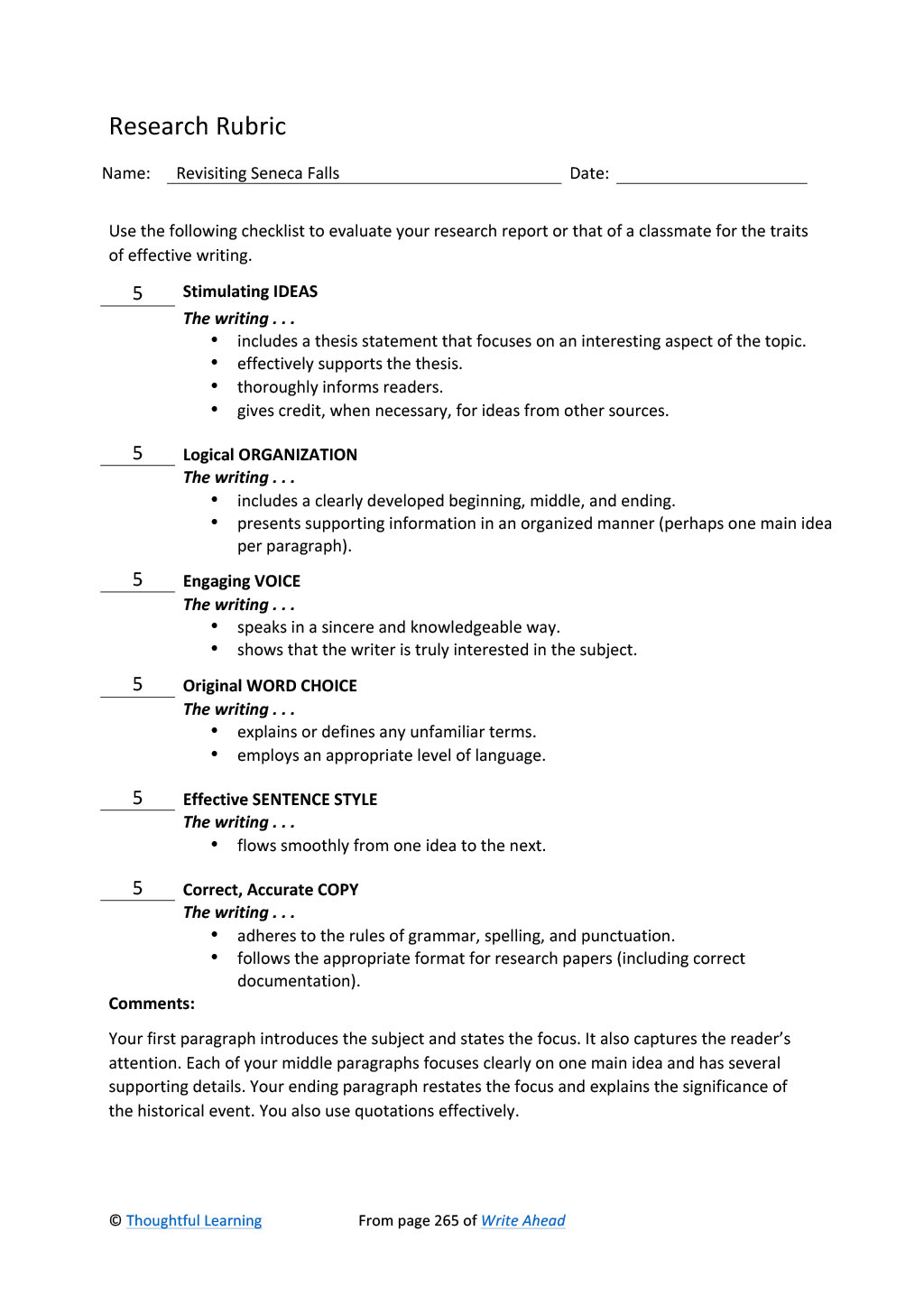Student Model
Revisiting Seneca Falls
“We hold these truths to be self-evident; that all men and women are created equal.” In 1848, with this rallying cry adapted from the 1776 Declaration of Independence (adding the words “and women”), 300 men and women gathered in Seneca Falls, New York, hoping to improve the status of women in the United States. Women’s lives were very different at that time. Women could not vote or run for public office, and they had few educational and job opportunities. They could not sign contracts, divorce an abusive husband, or keep their children if their husbands divorced them. Beginning with the Woman’s Rights Convention, the first organized gathering by women to demand their rights (“What Happened in Seneca Falls”), dedicated men and women have worked for many years to secure equal rights for women.
Lucretia Coffin Mott and Elizabeth Cady Stanton organized the first convention because they experienced a turning point in their lives. It happened in England in 1840. They were both abolitionists and were delegates to an international anti-slavery meeting in London. They had worked many years to end slavery in the United States. But at the meeting, women delegates were not allowed to participate. Dismayed and angered by this action, these two vowed to make a difference for women (Zimmerman).
Eight years later, the Woman’s Rights Convention put together the Declaration of Sentiments, which included 12 resolutions that called for ways that society and the law should treat women as the equals of men. The resolutions included the right to vote and the right to work in trades, in professions, or in business. One of the resolutions caused a great deal of discussion. Some thought a woman’s right to vote was ridiculous. Frederick Douglass, a former slave, told the people at Seneca Falls that unless women could vote, the laws against them would never change. With Douglass’s support, the resolution calling for women’s right to vote passed (“The First Women’s Rights Convention”).
Although the Declaration of Sentiments made many people angry, it had a positive impact on women’s rights. People who agreed with the cause of women’s rights began to organize. Seventy years after the Declaration of Independence, women still had no right to vote. Seventy more years would pass before women enjoyed the rights that Elizabeth Cady Stanton fought for so tirelessly (Coleman).
The women’s rights movement may seem like a modern idea, but it has been around for more than 150 years. Today women can vote, own property, have careers, and run for public office thanks to the movement that started with the Seneca Falls Convention. Although many of the women who went to the convention, including Stanton, did not live long enough to get the right to vote, they made an important contribution to women’s rights.
Works Cited
Coleman, Penny. Elizabeth Cady Stanton and Susan B. Anthony: A Friendship That Changed the World. Henry Holt, 2013.
“The First Women’s Rights Convention.” Women’s Rights National Historical Park, Seneca Falls, New York. 1 Apr. 2017, http://www.nps.gov/wori/convent.htm.
“What Happened in Seneca Falls in 1848?” Women’s Rights National Historical Park, Seneca Falls, New York.1 Apr. 2017, http://www.nps.gov/wori/senecafalls1848.htm.
Zimmerman, Loretta E. “Seneca Falls Convention.” Grolier Online Encyclopedia. Grolier Electronic Publishing, 2017.

Rubric


Revisiting Seneca Falls by Thoughtful Learning is licensed under a Creative Commons Attribution-NonCommercial-ShareAlike 4.0 International License.
Based on a work at k12.thoughtfullearning.com/assessmentmodels/revisiting-seneca-falls.